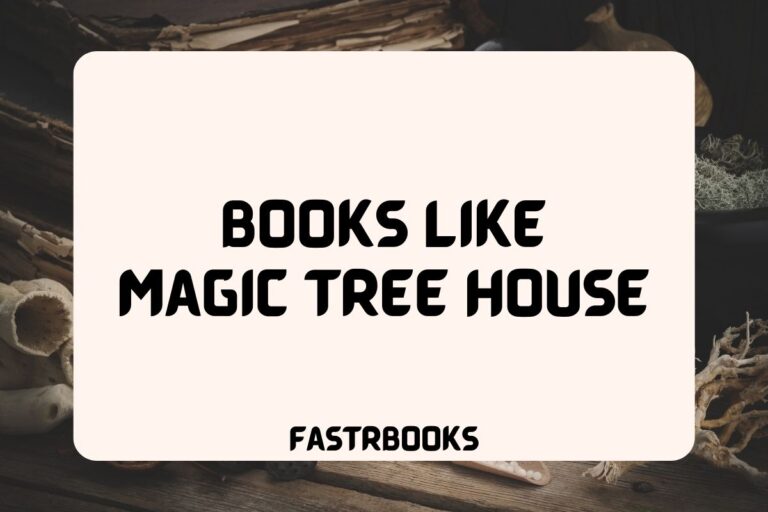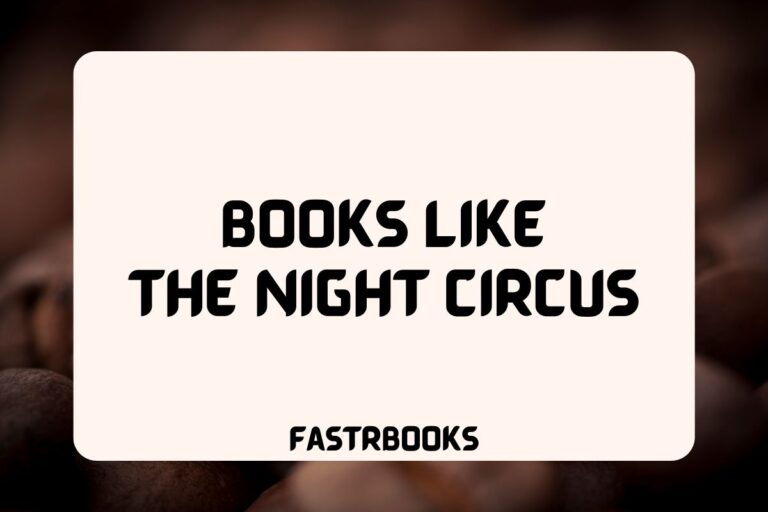16 Best Western Books

Welcome to our exploration of the American frontier through the captivating pages of Western literature. Western books have long held a special place in the hearts of readers, offering tales of rugged landscapes, fearless cowboys, and the untamed spirit of the Wild West.
In this blog, we’ll journey through some of the best Western books ever written, immersing ourselves in stories of adventure, courage, and the timeless mystery of the frontier.
Whether you’re a seasoned enthusiast or a newcomer to the genre, prepare to saddle up and embark on an unforgettable literary expedition into the heart of the American West.
Let’s go.
Best Western Books
1. Lonesome Dove by Larry McMurtry
“Lonesome Dove” is a sweeping epic that chronicles the adventures of two aging Texas Rangers, Augustus McCrae and Woodrow F. Call, as they embark on a perilous cattle drive from Texas to Montana.
This novel explores themes of friendship, unrequited love, and the harsh realities of frontier life. McMurtry’s vivid storytelling brings to life the landscapes of the American West and the complex characters who inhabit it.
What makes it amazing?
What sets “Lonesome Dove” apart is its deep emotional resonance and the richly drawn characters, whose strengths, weaknesses, and moral complexities are portrayed with profound empathy. The narrative combines epic adventure, tragic drama, and humor, offering a nuanced reflection on the American dream and the myth of the cowboy.
It’s a masterful tale that captures the spirit of the West with authenticity and poetic grace, making it a cornerstone of Western literature.
2. True Grit by Charles Portis
“True Grit” is the riveting story of Mattie Ross, a determined and intelligent fourteen-year-old girl from Arkansas who sets out to avenge her father’s murder.
With the help of a tough and gritty U.S. Marshal, Rooster Cogburn, and a Texas Ranger named LaBoeuf, Mattie pursues the killer into Indian Territory. This novel is celebrated for its distinctive narrative voice, dry wit, and vivid characters.
What makes it amazing?
The novel’s brilliance lies in its unique protagonist, Mattie Ross, whose relentless pursuit of justice and moral integrity drives the narrative. Charles Portis blends adventure, humor, and tragedy to create a timeless tale of courage and determination.
“True Grit” stands out for its memorable characters, evocative setting, and the way it subverts traditional Western tropes, making it a classic that transcends its genre.
3. Blood Meridian by Cormac McCarthy
Set in the 1850s, “Blood Meridian” follows a teenage runaway known only as “the kid” who becomes entwined with a notorious gang of Indian-hunters led by the enigmatic and terrifying Judge Holden.
The novel is infamous for its graphic violence and explores themes of existentialism, the nature of evil, and the destruction of the frontier. McCarthy’s prose is dense and lyrical, painting a bleak picture of the American West.
What makes it amazing?
“Blood Meridian” is remarkable for its philosophical depth and the sheer power of its prose. Cormac McCarthy’s ability to craft scenes of breathtaking brutality alongside moments of profound beauty and contemplation makes this novel a profound study of violence and power.
The character of Judge Holden stands as one of the most formidable figures in literature, embodying the novel’s exploration of morality and humanity’s capacity for evil.
4. The Virginian by Owen Wister
“The Virginian,” published in 1902, is often hailed as the first true Western novel. It tells the story of a nameless cowboy, known only as the Virginian, and his adventures and romance in Wyoming.
Through its depiction of life on the frontier, the novel explores themes of honor, justice, and the clash between the untamed wilderness and the encroaching forces of civilization.
What makes it amazing?
Owen Wister’s novel is groundbreaking in its establishment of the Western genre’s conventions, from its setting and character archetypes to its exploration of moral and ethical dilemmas. The Virginian’s character embodies the ideal cowboy hero—stoic, honorable, and skilled in the ways of the frontier.
The novel’s influence on subsequent Western literature and film cannot be overstated, making it a foundational work that has shaped perceptions of the American West.
5. Riders of the Purple Sage by Zane Grey
“Riders of the Purple Sage,” published in 1912, is Zane Grey’s best-known novel. It follows the story of Jane Withersteen and her battle to defend her ranch in the face of religious bigotry and land-grabbing in the Utah borderlands.
With the help of the mysterious gunslinger Lassiter, Jane fights for her land and finds love amidst the turmoil.
What makes it amazing?
“Riders of the Purple Sage” is acclaimed for its vivid descriptions of the western landscape and its exploration of themes such as freedom, individualism, and the conflict between wilderness and civilization.
Zane Grey’s portrayal of the West is both idealized and authentic, capturing the beauty and brutality of frontier life. The novel’s influence on the genre is immense, setting the standard for many Westerns that followed.
6. The Shootist by Glendon Swarthout
“The Shootist” tells the story of John Bernard Books, a legendary gunfighter facing his final days with terminal cancer in the early 20th century. Resolving to die with dignity, Books seeks peace but finds the world unwilling to let him go quietly.
Swarthout crafts a poignant tale of mortality, legacy, and the changing American West, offering a stark departure from the glorified gunfighter myth.
What makes it amazing?
“The Shootist” stands out for its introspective take on a dying gunfighter’s struggle with his impending death and the legacy he will leave behind.
The novel challenges the romanticism of the West, presenting a more nuanced and realistic portrayal of a gunfighter’s life. Swarthout’s exploration of themes such as dignity, mortality, and the passage of time, combined with a compelling narrative, makes this book a memorable and thought-provoking read.
7. The Sisters Brothers by Patrick deWitt
Set in the California Gold Rush, “The Sisters Brothers” follows Eli and Charlie Sisters, notorious assassins working for a powerful Oregon City crime boss.
The narrative, told from Eli’s perspective, explores their journey to San Francisco and their quest to kill a prospector. The novel is a blend of dark comedy and tragedy, examining the bonds of brotherhood, the pursuit of wealth, and the quest for a better life.
What makes it amazing?
Patrick deWitt’s novel is remarkable for its unique voice and the way it combines elements of classic Westerns with a darkly humorous and poignant narrative. The characters of Eli and Charlie are deeply developed, with Eli’s introspective and conflicted nature providing a stark contrast to the violent world they inhabit.
“The Sisters Brothers” is a refreshing and innovative take on the Western genre, offering both humor and depth in its exploration of violence, morality, and redemption.
8. The Ox-Bow Incident by Walter Van Tilburg Clark
“The Ox-Bow Incident” is a gripping novel set in 1885 Nevada, centering around a posse formed to avenge a reported murder and cattle rustling. The story unfolds through the eyes of Art Croft and Gil Carter, who witness the mob’s rush to judgment.
Clark’s novel is a powerful examination of mob mentality, justice, and the consequences of lawlessness.
What makes it amazing?
What makes “The Ox-Bow Incident” exceptional is its critical look at the concept of frontier justice and the dangers of vigilantism. Clark delves into the psychology of the mob, revealing how fear and anger can lead to tragic injustice.
The moral questions posed by the narrative, combined with its tense and compelling plot, make this novel a profound critique of the American ethos of self-made justice and a timeless commentary on the human condition.
9. Shane by Jack Schaefer
“Shane” is a classic Western novel that tells the story of a mysterious and enigmatic gunslinger who drifts into a small Wyoming valley and befriends a homesteading family, the Starretts.
As tensions rise between homesteaders and a ruthless cattle baron, Shane’s violent past catches up with him, leading to a dramatic conclusion. The novel explores themes of heroism, the taming of the frontier, and the conflict between changing values and traditional ideals.
What makes it amazing?
“Shane” captivates readers with its simple yet profound narrative, highlighting the mythic qualities of the Western hero.
The character of Shane embodies the idealized lone gunslinger who stands up for justice and protects the weak, making him a timeless figure in American lore. Schaefer’s skillful storytelling and the novel’s exploration of the moral complexities of the West make it a seminal work in the genre, celebrated for its depth, character development, and enduring themes.
10. Warlock by Oakley Hall
“Warlock” delves into the tumultuous life of a fictional mining town named Warlock, set against a backdrop of frontier lawlessness.
Through a rich tapestry of characters, including the marshal Clay Blaisedell, the gambler Tom Morgan, and a young cowboy named John Gannon, the novel explores the complex dynamics of power, justice, and morality. Hall’s narrative weaves together personal stories with the broader social and political issues facing the West.
What makes it amazing?
Oakley Hall’s “Warlock” is remarkable for its ambitious scope and the depth of its examination of the American myth of the frontier. The novel’s critical view of the glorification of violence and the complexities of justice in a lawless society offers a nuanced critique of Western mythology.
With its intricate plotting, moral ambiguity, and rich character development, “Warlock” stands as a towering work of literature, challenging and redefining the conventions of the Western genre.
11. Butcher’s Crossing by John Williams
“Butcher’s Crossing” unfolds the story of Will Andrews, a young man who leaves his Harvard education behind to seek adventure in the West. He arrives in Butcher’s Crossing, Kansas, where he joins a buffalo hunt that promises wealth and excitement.
However, the journey into the Colorado wilderness becomes a harrowing tale of obsession, survival, and the harsh realities of nature. Williams presents a stark, vivid portrayal of the American frontier, challenging the romantic notions of the West.
What makes it amazing?
John Williams’ “Butcher’s Crossing” is remarkable for its stark depiction of the American West and the buffalo hunting era. The novel delves into the themes of man versus nature, the destruction of the American wilderness, and the disillusionment with the American dream.
Williams’ prose is both beautiful and brutal, capturing the vast landscapes and the psychological depth of his characters. The novel stands as a powerful meditation on humanity’s relationship with nature and the costs of ambition.
12. Monte Walsh by Jack Schaefer
“Monte Walsh” is Jack Schaefer’s tribute to the passing of the cowboy era. The novel follows Monte Walsh, a cowboy who grapples with the end of the open range and the changing American West.
Through his eyes, readers experience the nostalgia of a bygone era, the camaraderie among cowboys, and the inevitable decline of the cowboy way of life. Schaefer’s narrative is a poignant reflection on change, loyalty, and the enduring spirit of the West.
What makes it amazing?
“Monte Walsh” captures the essence of the cowboy lifestyle and its decline with a poignant, bittersweet tone. Schaefer’s storytelling is imbued with a deep love for the West and its characters, making the narrative both authentic and moving.
The novel’s exploration of themes such as adaptability, loss, and the passage of time resonates with anyone who has faced the end of an era. Schaefer’s ability to evoke the spirit and challenges of the late cowboy era makes “Monte Walsh” an enduring masterpiece of Western literature.
13. Destiny’s Road by Larry Niven
“Destiny’s Road” takes the Western genre to a new frontier: a distant planet named Destiny. The story follows Jemmy Bloocher as he travels Destiny’s Road, a long, winding path created by the settlers’ original landing craft.
Along his journey, Jemmy encounters various settlements and unravels the mysteries of the planet’s history, including the crucial, life-sustaining spice that grows only along the Road. Niven’s novel is a unique blend of science fiction and Western themes, exploring colonization, survival, and the quest for freedom.
What makes it amazing?
Larry Niven’s “Destiny’s Road” is a fascinating reinterpretation of the Western genre within a science fiction framework. The novel’s exploration of pioneering spirit, autonomy, and the challenges of a new world mirrors the traditional themes of Westerns, while its setting and sci-fi elements provide a fresh and engaging backdrop.
Niven’s world-building is meticulous, creating a vivid and compelling universe that highlights humanity’s drive to explore and conquer new frontiers. The blend of adventure, mystery, and the struggle for independence makes “Destiny’s Road” a captivating and innovative read.
14. Wolf in Shadow by David Gemmell
“Wolf in Shadow” is a genre-bending novel that combines elements of the Western with post-apocalyptic fantasy.
The protagonist, Jon Shannow, is a lone gunslinger on a quest in a world that has been shattered by a cataclysmic event. Shannow’s journey through the ravaged landscapes, encountering brigands, zealots, and ancient technology, is a compelling mix of action, myth, and heroism.
Gemmell’s narrative is a dark, gritty, and imaginative take on the Western motif, exploring themes of redemption, faith, and the eternal struggle between good and evil.
What makes it amazing?
David Gemmell’s “Wolf in Shadow” stands out for its creative fusion of Western and fantasy elements, presenting a dystopian world with a distinct gunslinger hero. The novel’s dark and atmospheric setting, combined with the mythic quality of its storytelling, offers a unique and gripping reading experience.
Gemmell’s ability to weave complex themes with thrilling action and deep character development makes the tale of Jon Shannow a memorable and thought-provoking adventure. The novel’s innovative approach to genre and its exploration of timeless themes ensure its place as a standout work in speculative fiction.
15. Deadwood by Pete Dexter
“Deadwood” brings to life the notorious town of Deadwood, South Dakota, during its gold rush heyday in the late 1870s. Dexter’s novel is populated with historical figures, including Wild Bill Hickok, Calamity Jane, and a host of other characters drawn to the promise and peril of the frontier town.
Through a blend of historical fact and fiction, Dexter crafts a vivid portrayal of Deadwood, exploring themes of lawlessness, ambition, and the American quest for fortune.
What makes it amazing?
Pete Dexter’s “Deadwood” captures the chaotic spirit of the American frontier with sharp wit and gritty realism. The novel’s strength lies in its rich characterizations and the authentic depiction of Deadwood as a microcosm of the American dream and its discontents.
Dexter’s blend of historical figures with fictional storytelling creates a compelling narrative that is both entertaining and insightful. The novel’s exploration of the complexities of frontier life and the human stories within the historical town of Deadwood make it a captivating and unforgettable read.
16. The Son by Philipp Meyer
“The Son” is an epic saga that spans over 150 years, tracing the rise of the McCullough family in Texas. From the early frontier battles to the oil booms of the 20th century, the novel weaves together the stories of three generations of the McCullough family, exploring themes of power, legacy, and survival.
Meyer’s narrative is a rich tapestry of Texas history, marked by violence, ambition, and the shifting tides of American progress.
What makes it amazing?
Philipp Meyer’s “The Son” is remarkable for its ambitious scope and the depth of its historical and psychological insight.
The novel’s multi-generational narrative offers a panoramic view of Texas’s evolution, capturing the complexity of the American experience. Meyer’s skillful storytelling and rich character development explore the personal costs of ambition and the inexorable pull of legacy.
The epic scale, combined with the intimate portraits of its characters, makes “The Son” a powerful and profound exploration of the American spirit.






